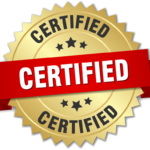Learning web development as a beginner can be tricky and full of challenges. You have to learn coding and programming and bring creativity to develop your first website. According to the stats, there are over 5 billion internet users and 2 billion websites on the internet. Web development may not be as difficult as some people think. Some proven strategies and steps to remember and develop a user-friendly website in no time. Aside from these programming languages and coding, you have to develop skills and learn the crucial parts and steps needed for web development.
There are several website development tutorials for beginners, which make learning web development easier for newcomers. However, these tutorials wouldn’t help unless you have a proper understanding of the path, steps, indicators, and web development tools for beginners to bring visitors and make the website more compelling. Web development companies follow these steps and procedures to make a perfect, modern, and responsive website for users.
Learning Web Development as Beginner
When you get the first project of web development as a beginner, you don’t have a clear insight on what to do and how to do it to make a good impression on the client. If you are looking for tips on website development, you’re not alone. Here is the complete website development guide if you are struggling as a beginner.
1. Information Gathering/Goal Identification
If you are learning web development, this first step is very crucial for you. Best website developers always consider information gathering and goal setting the most critical and basic things before starting any project. This is how a web developer gets clarity about various things such as,
- Who is the target audience? The location, gender, age, and interest of the target audience are important for web development.
- What is the purpose of the website? The most important thing is to keep recalling the purpose to avoid being misguided. Know what the audience will find or do on the website.
- What is the primary purpose of the website? There are different niches or categories of websites. Some websites are just for information purposes, some are eCommerce, and some websites have services and solutions.
- What are the competitor websites? A quality website always stands out from the crowd. It has more options, features, and indicators to make its mark in the competitive market.
There is a marked difference between the website depending on their target category. For example, news-related websites are different than sports or game-related websites. Similarly, educational sites are different, and eCommerce sites have their own peculiar features. If you’re a beginner, you have to spend some time with the client and learn about his requirement. This is how you can set goals and achieve them accordingly.
2. Website Planning
One of the most integral steps of web development for beginners is website planning. Strong and effective website planning brings more clients and increases referrals. Here is the checklist for website developers for persuasive and engaging website planning,
- Document the goals such as increasing traffic, boosting sales, improving the search ranking, generating leads, and improving conversion rate.
- Every website owner has user personas. You have to create a list of user personas such as age, education, frustrations, material status, needs, expectations, personal pain points and anxieties, likes/dislikes, and personal traits.
- The content management system is another thing to consider in this regard. How to manage the existing content and how much flexibility to create new landing pages.
- Now it’s time to create an SEO plan based on keyword research. Keyword research involves various tools such as Ahrefs, SEMRush, and Ubersuggest, and it will tell you the type of information needed on the website.
- Now plan your integration requirements and technology required for effective website development to support the required functionality and goals.
- In the last step, you must develop the sitemap, conversion funnels, and KPIs for the website.
Your website planning is one of the most important considerations in website development. One small step, if skipped, can cost you a lot. Therefore, be aware of creating proper documentation for each part of the planning process.
3. Content Creation
When you have built the page layout and put the website’s framework in place, then it is time for content creation. Some web owners don’t put much emphasis on content writing; this is the reason they fail to rank their business and get traffic even if the website is professionally built. In this step, a web developer assigns this task to a content writer to create catchy titles, Calls to Action (CTAs), and Text editing. Effective content helps you meet the goals by driving traffic and compels them to action. Small pieces of content with persuasive words and lines can help achieve the goals in no time. Content writing may take extra time; therefore, always keep your content ready in advance.
In the previous step, the developer conducts keyword research and finds valuable keywords. Now, it’s time to use those keywords so that you can convey your message to your target audience. In the end, the content is optimized with your focus keywords and LSI or supporting keywords. The inclusion of the keywords helps Google in ranking your page in SERPs.
4. Visual Elements
No one can deny the importance of visual elements for the website. Visual elements are the graphic sketch or graphic designs that add to the beauty of the website. The graphic design varies from website to website. For this purpose, you can hire a professional graphic designer or photographer to make your visual elements more compelling and effective.
Your images should be mobile-friendly and help build trust. It speaks to your visitors and delivers the message of the web page effectively. Nowadays, it plays a crucial role in increasing revenue, clicks, and engagement. No one would like to stay on a website with poor graphics, and it may decrease engagement and revenue in the end. There are several websites that offer free stock photos. Just visit those websites and get the desired images.
5. Coding/Design/Development
web development for beginners is a combination of several other skills and not just only coding because learning web development is a continuous process, and you evolve with time. Well, coming back to the topic. When you have all the visuals, planning, and content, now it’s time for web development and coding to meet the demands of the modern era and make it more successful. As a back-end developer, you have to develop code according to the latest technology for a high-quality result. A front-end developer uses HTML, CSS, and JavaScript to show the approved designs. At this stage, a web developer also installs the most needed plugins and uses coding strategies for better SEO.
6. Launch
Before launching, you have to check whether all links work or not. This is how you will be able to find different errors and fix them accordingly. When the website is thoroughly tested, and everything is in place, then it’s time for launching. Every website requires consistent maintenance; therefore, be ready for bugs and errors. After the successful launch, you can suggest several tools and options to the client for the effective working of the website.
Conclusion
Learning web development is easier when you have the knowledge about the steps mentioned earlier. Web development is all about adoring a website with the required options, tools, and coding for a better user experience. For this purpose, you must know the goals and objectives and then conduct complete website planning. After planning the website, you need to create awesome content and graphics for the website. Both catchy content and graphics play a vital role in making new clients and boosting your sales. Next, the most important stage comes where you have to develop awesome code for the website and install plugins and widgets for a better user experience. Testing is a stage where you find errors and bugs and check all plugins, codes, and links properly. When everything is in place, go for launching. We strongly hope that you have obtained the idea about web development for beginners in detail.





2 Responses
Thank you for your sharing. I am worried that I lack creative ideas. It is your article that makes me full of hope. Thank you. But, I have a question, can you help me?
Your article gave me a lot of inspiration, I hope you can explain your point of view in more detail, because I have some doubts, thank you.